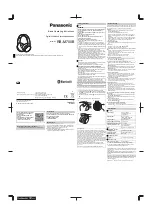
LEON-G100 / LEON-G200 - System Integration Manual
GSM.G1-HW-09002-G3
Preliminary
Design-In
Page 89 of 125
2.2.1.5
Charger Layout (for LEON-G200 only)
If battery charger is implemented,
V_CHARGE
must withstand the charge current (typically in the order of
several hundred mA) continuous current sink. Voltage drop is not as critical as for
VCC
, but dimension the line
width adequately to support the charge current without excessive loss that may lead to increase in PCB
temperature.
CHARGE_SENSE
senses the charger voltage: it sinks a few µA. Therefore its line width is not critical. Since it is
an analog input, it must be connected to
V_CHARGE
away from noisy sources.
2.2.1.6
Other Sensitive pins
A few other pins on the LEON-G100 / LEON-G200 require careful layout.
Backup battery (V_BCKP)
: avoid injecting noise on this voltage domain as it may affect the stability of
sleep oscillator
Analog-to-Digital Converter (ADC1)
: it is a high impedance analog input; the conversion accuracy will be
degraded if noise injected. Low-pass filter may be used to improve noise rejection; typically L-C tuned for RF
rejection gives better results
Power On (PWR_ON)
: is the digital input for power-on of the LEON-G100 / LEON-G200. It is implemented
as high impedance input. Ensure that the voltage level is well defined during operation and no transient
noise is coupled on this line, otherwise the module may detect a spurious power-on request
2.2.1.7
Digital pins
External Reset (RESET_N)
: input for external reset, a logic low voltage will reset the module
SIM Card Interface (VSIM, SIM_CLK, SIM_IO, SIM_RST)
: the SIM layout may be critical if the SIM card is
placed far away from LEON-G100 / LEON-G200 or in close vicinity of RF antenna. In the first case the long
connection may radiate higher harmonic of digital data. In the second case the same harmonics may be
picked up and create self-interference that can reduce the sensitivity of GSM Receiver channels whose carrier
frequency is coincident with harmonic frequencies. In the later case using RF bypass capacitors on the digital
line will mitigate the problem. In addition, since the SIM card typically accesses by the end use, it may be
subjected to ESD discharges: add adequate ESD protection to improve the robustness of the digital pins
within the module. Remember to add such ESD protection along the path between SIM holder toward the
module
Digital Audio (I2S_CLK, I2S_RX, I2S_TX, I2S_WA)
: the I
2
S interface requires the same consideration
regarding electro-magnetic interference as the SIM card. Keep the traces short and avoid coupling with RF
line or sensitive analog inputs
DDC (SCL, SDA)
: the DDC interface requires the same consideration regarding electro-magnetic
interference as for SIM card. Keep the traces short and avoid coupling with RF line or sensitive analog inputs
UART (TXD, RXD, CTS, RTS, DSR, RI, DCD, DTR)
: the serial interface require the same consideration
regarding electro-magnetic interference as for SIM card. Keep the traces short and avoid coupling with RF
line or sensitive analog inputs
















































